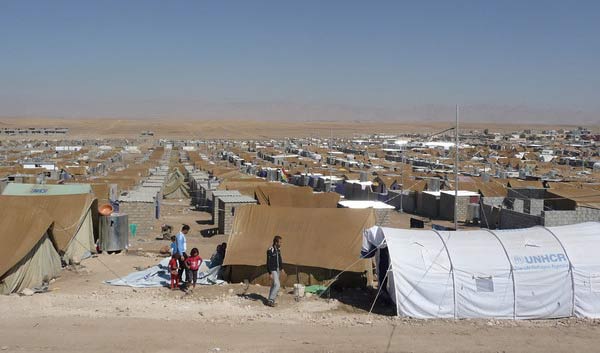UNHCR: Refugee figures highest since World War Two
According to the UN refugee agency, the number of people forced to flee their homes because of war or persecution exceeded 50 million in 2013, the first time since World War Two.
The overall figure of 51.2 million is six million higher than the year before, a report by the United Nations High Commissioner for Refugees (UNHCR) says.
Conflicts in Syria, central Africa and South Sudan fuelled the sharp increase.
Of particular concern are the estimated 6.3 million people who have been refugees for years, sometimes even decades.
People living in what the UN terms “protracted” refugee situations include more than 2.5 million Afghans. Afghanistan still accounts for the world’s largest number of refugees, and neighboring Pakistan is host to more refugees than any other country, with an estimated 1.6 million.

The number of people forced to flee their homes because of war or persecution exceeded 50 million in 2013, the first time since World War Two (photo UNHCR)
Around the world, thousands of refugees from almost forgotten crises have spent the best part of their lives in camps. Along Thailand’s border with Burma, 120,000 people from Burma’s Karen minority have lived in refugee camps for more than 20 years.
Refugees should not be forcibly returned, the UN says, and should not go back unless it is safe to do so, and they have homes to return to. For many – among them the more than 300,000 mainly Somali refugees in Kenya’s Dadaab camp – that is a very distant prospect.
Some camps, the UN refugee agency admits, have become virtually permanent, with their own schools, hospitals, and businesses. But they are not, and can never be, home.
The world’s refugees are far outnumbered by the internally displaced (IDP) – people who have been forced to flee their homes, but remain inside their own countries.
In Syria alone there are thought to be 6.5 million displaced people. The conflict has uprooted many families not once but several times. Their access to food, water, shelter and medical care is often extremely limited, and because they remain inside a conflict zone, it is hard for aid agencies to reach them.
Worldwide, the UN estimates there are now 33.3 million internally displaced people.
Large numbers of refugees and IDPs fleeing to new areas inevitably put a strain on resources, and can even destabilize a host country.
Throughout the Syrian crisis, Lebanon, Jordan and Turkey have kept their borders open. Lebanon now hosts more than a million Syrian refugees, meaning a quarter of its total population is Syrian. The pressure on housing, education and health is causing tensions in a country which itself has a recent history of conflict.
The UN is concerned that the burden of caring for refugees is increasingly falling on the countries with the least resources. Developing countries are host to 86% of the world’s refugees, with wealthy countries caring for just 14%.
Despite the fears in Europe about growing numbers of asylum seekers and immigrants, that gap is growing. Ten years ago wealthy countries hosted 30% of refugees, and developing countries 70%.
[youtube H2C6YhAqHxI 650]
